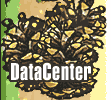Cannon Square is a small (50' x 50') compact space elevated above the surrounding sidewalk by a 12-inch-high granite curb. The square is surrounded on all four sides by narrow streets. A wood-post-and-chain fence enclosing the square opens at the middle of the south end to allow entry. Three flagstones lead to a flagpole. Behind the flagpole is an obelisk and to each side of this monument is an 18-pound cannon. The cannons were used to defend Stonington during the War of 1812 (see History). Between the cannons is a brownstone monument composed of a three-tiered square base, a square shaft, and a molded cap. Mounted at the top is an iron cannonball, presumably from the battle of 1814. An engraved inscription on the south side reads. "To the defenders of the fort. Geo. Howe Fellows who nailed the flag to the mast." Nine names follow. The monument is engraved on the north side with the following words: IN PERPETUAM REI MEMORIAM/THESE TWO GUNS/OF EIGHTEEN POUND CALIBER/WERE HEROICALLY USED IN REPELLING/THE ATTACK ON/STONINGTON/OF THE ENGLISH/NAVAL VESSELS/RAMILLIES 74 GUNS,/PACTOLUS 44,/DESPATCH 20,/NIMROD 20,/AND THE BOMBSHIP TERROR.
Vegetation on the square is simple, befitting the historic status of the space. A tree is planted at each corner, two maples and two pines. Underneath the northeast pine is a plaque that reads. "Tree planted in memory of James H. Stivers, a pioneer in American Scouting August 7, 1965, by surviving members of troop 18, Boy Scouts of America."
The square is surrounded by well-preserved 19th century residential structures and a Greek revival stone bank building built in 1850. The bank (now the Hartford National Bank) is built of dressed granite with freestanding Doric columns, long windows, and triglyphs in the entablature.
Among the significant residential structures are 7 Main Street, a Greek revival home built in 1840, a home at 1 Cannon Square built in the Second Empire style, and the 1848 Gordon Pendleton house adjacent to the stone bank.






![]()